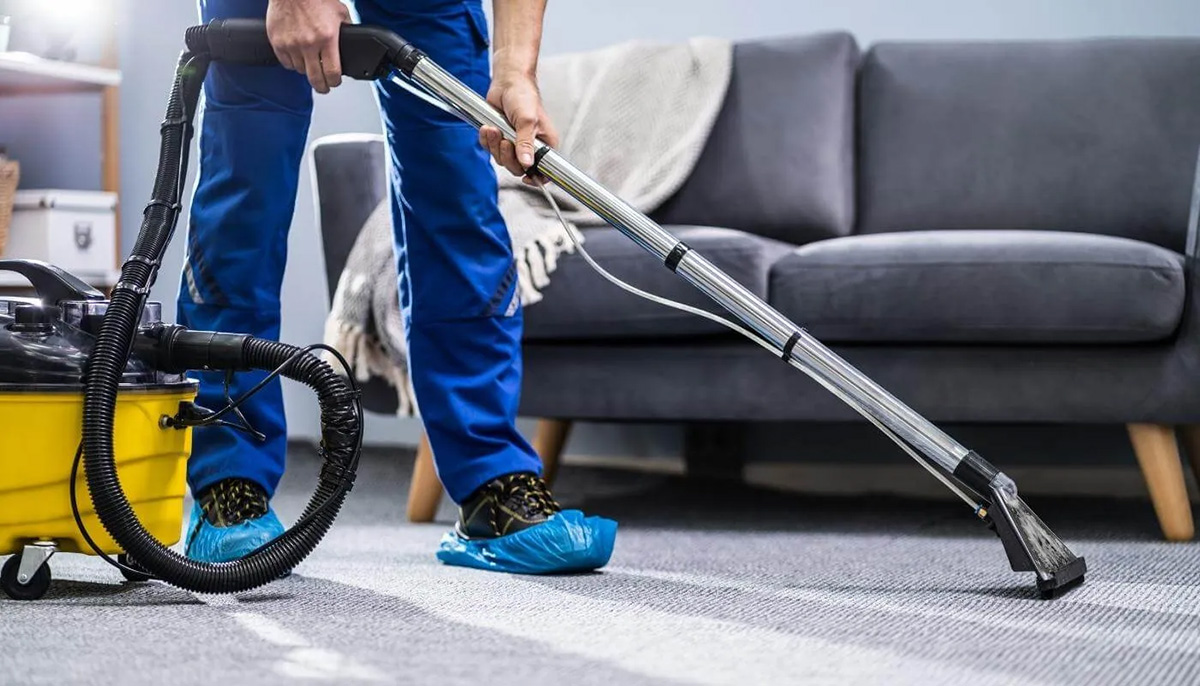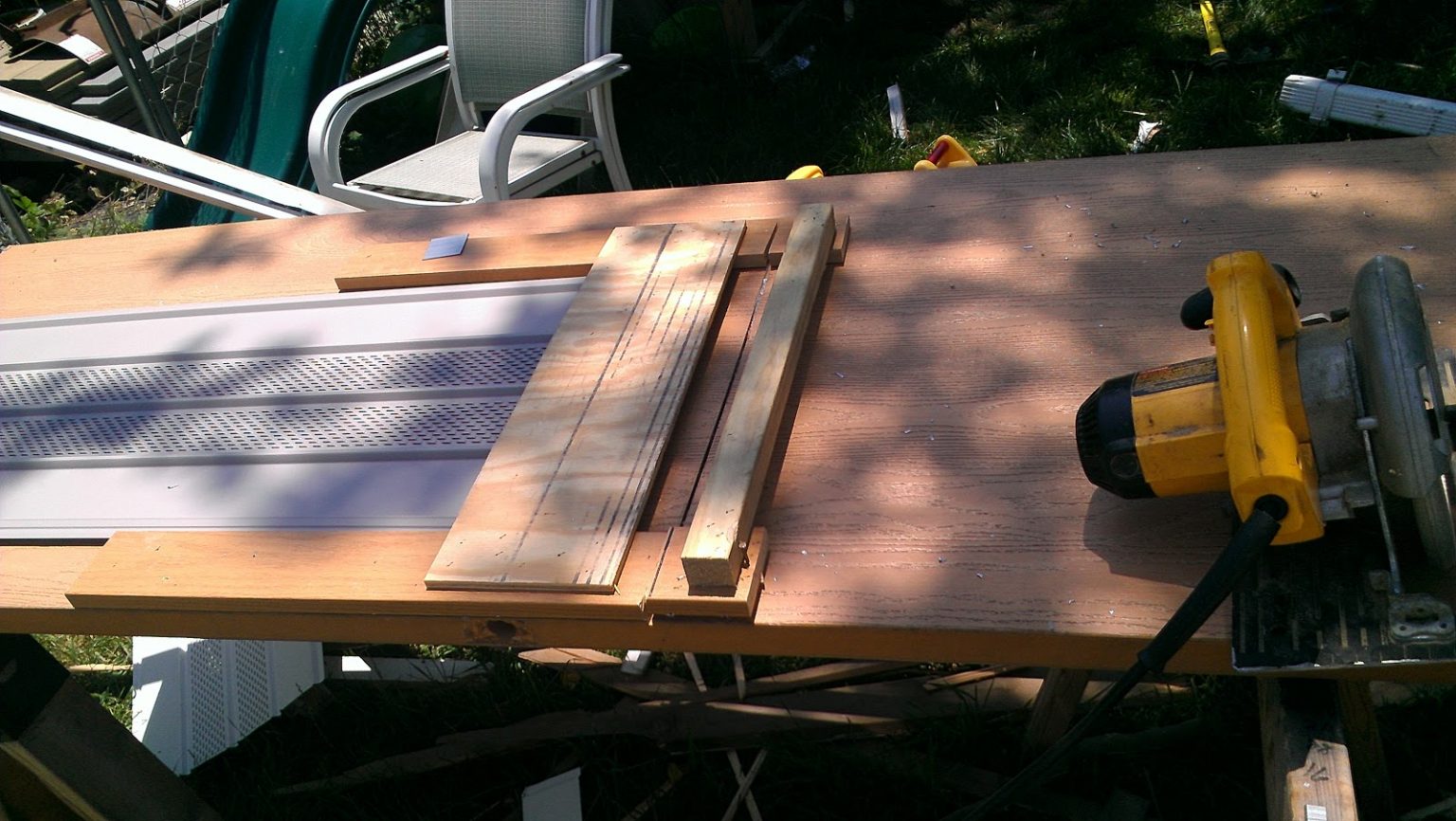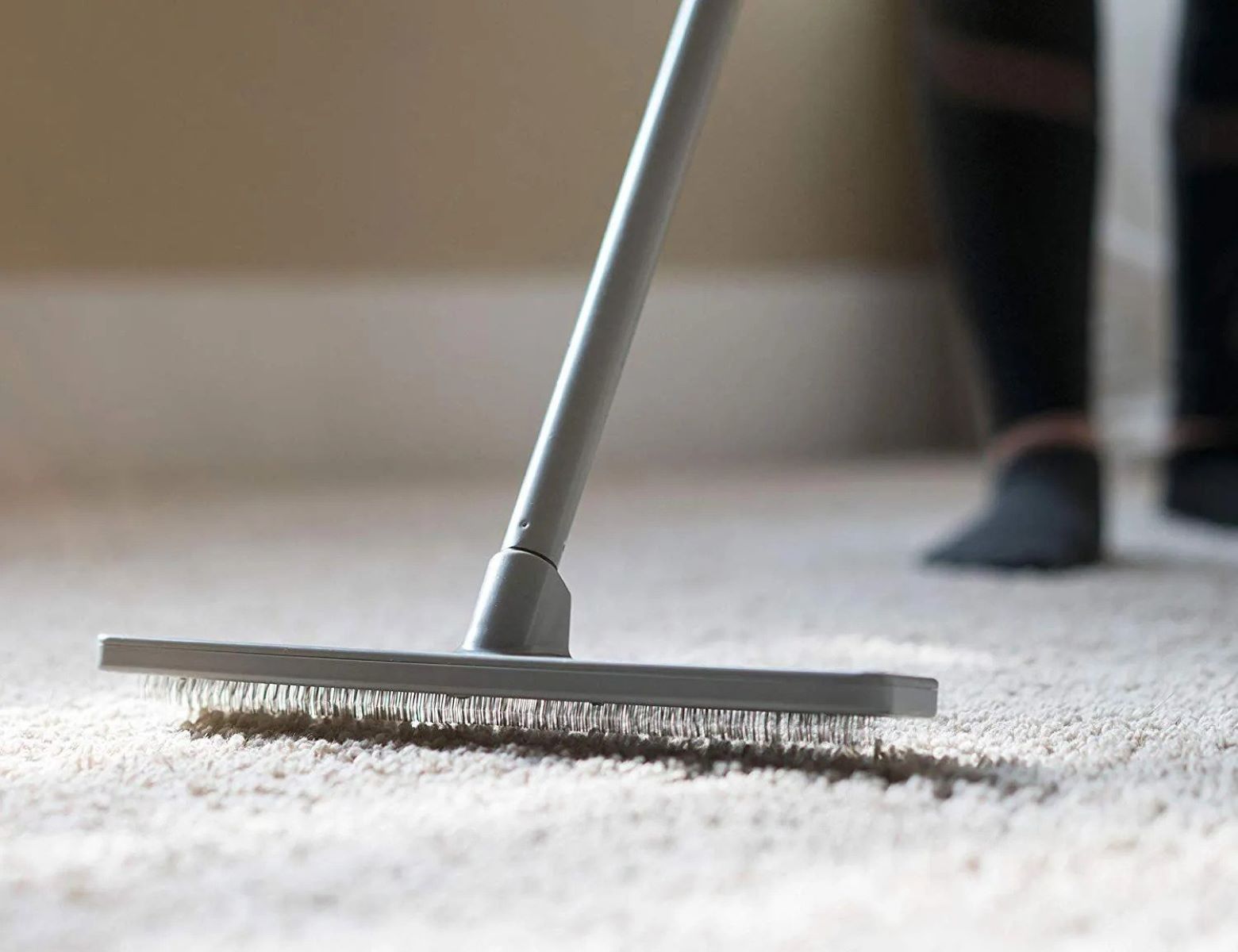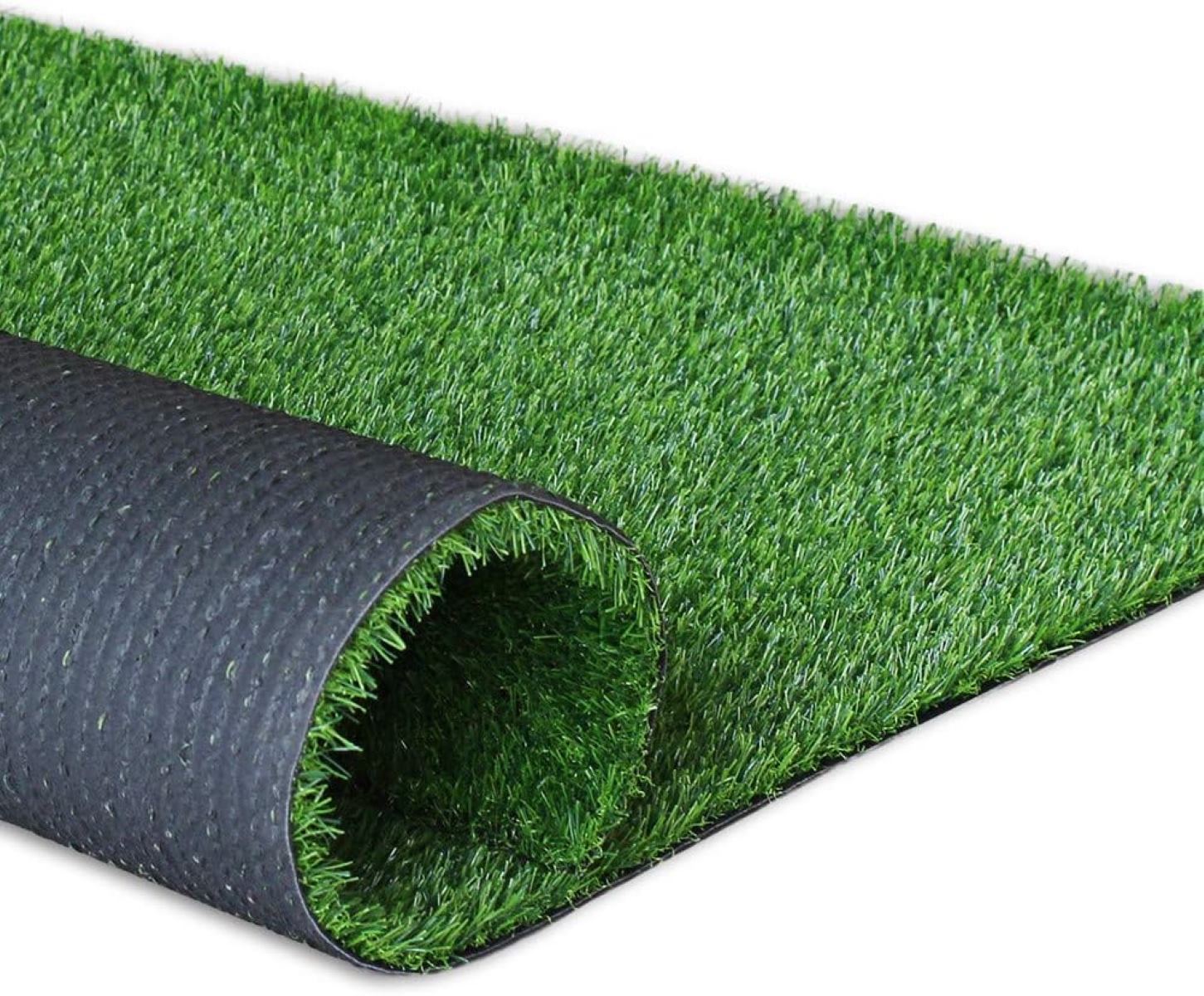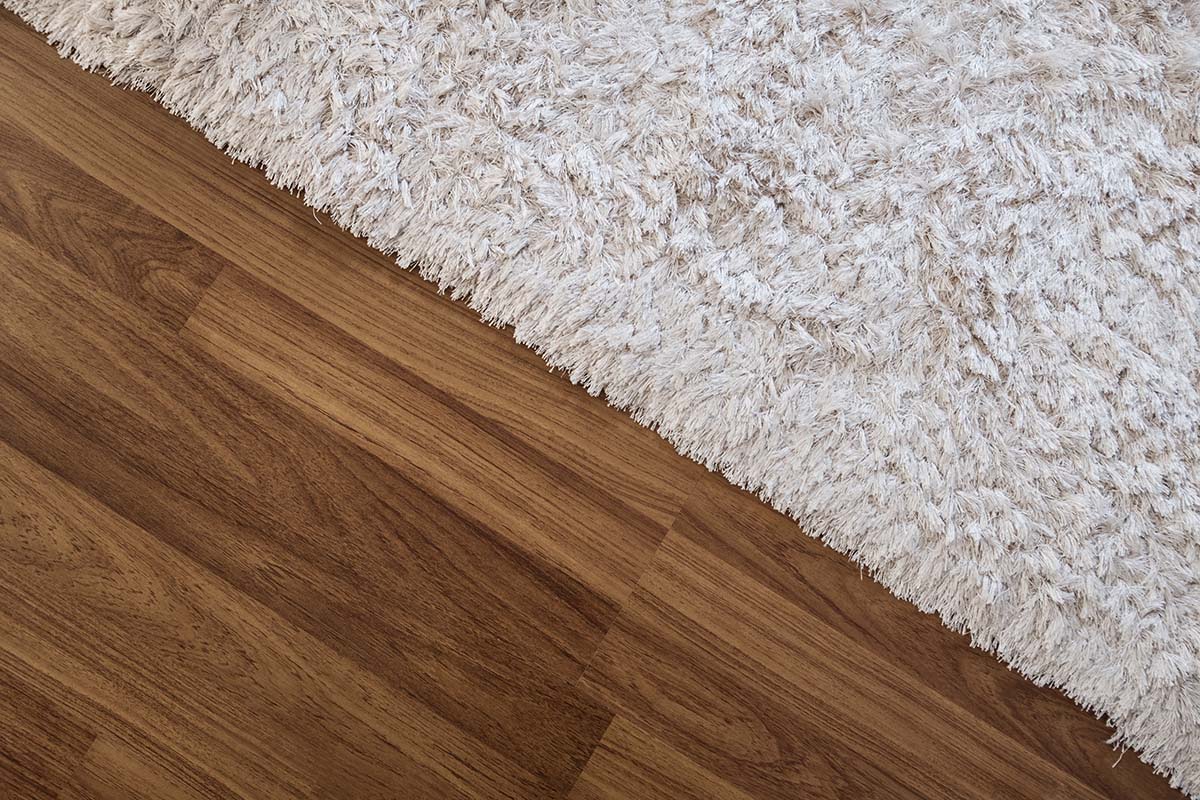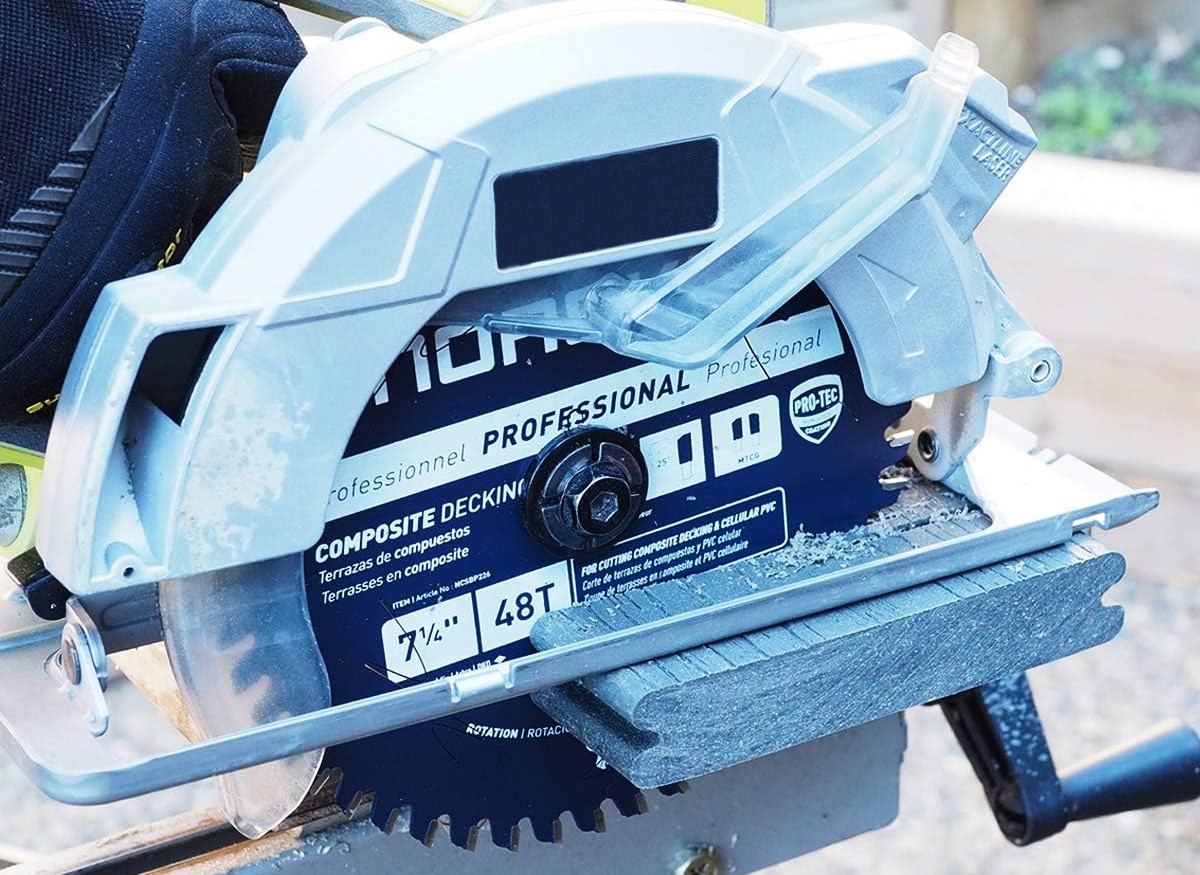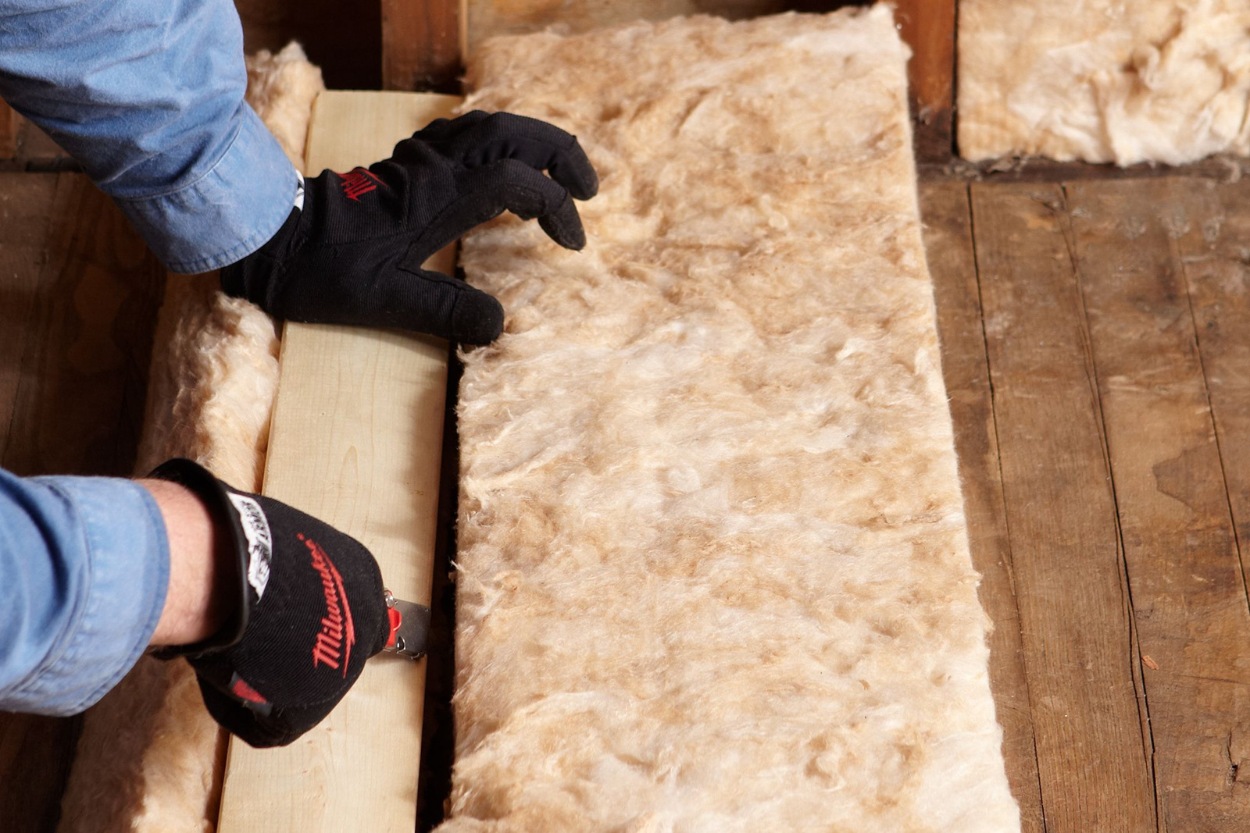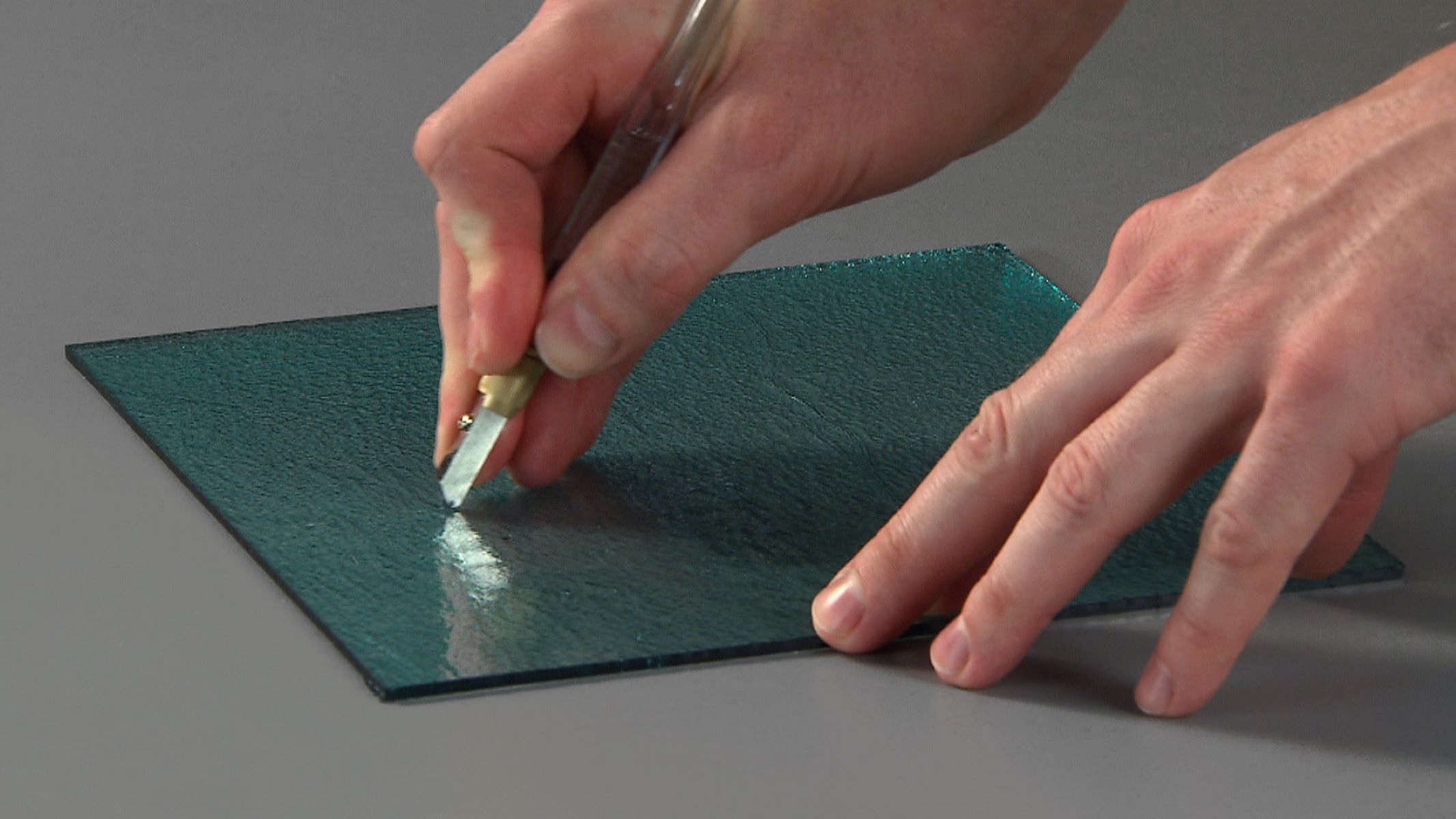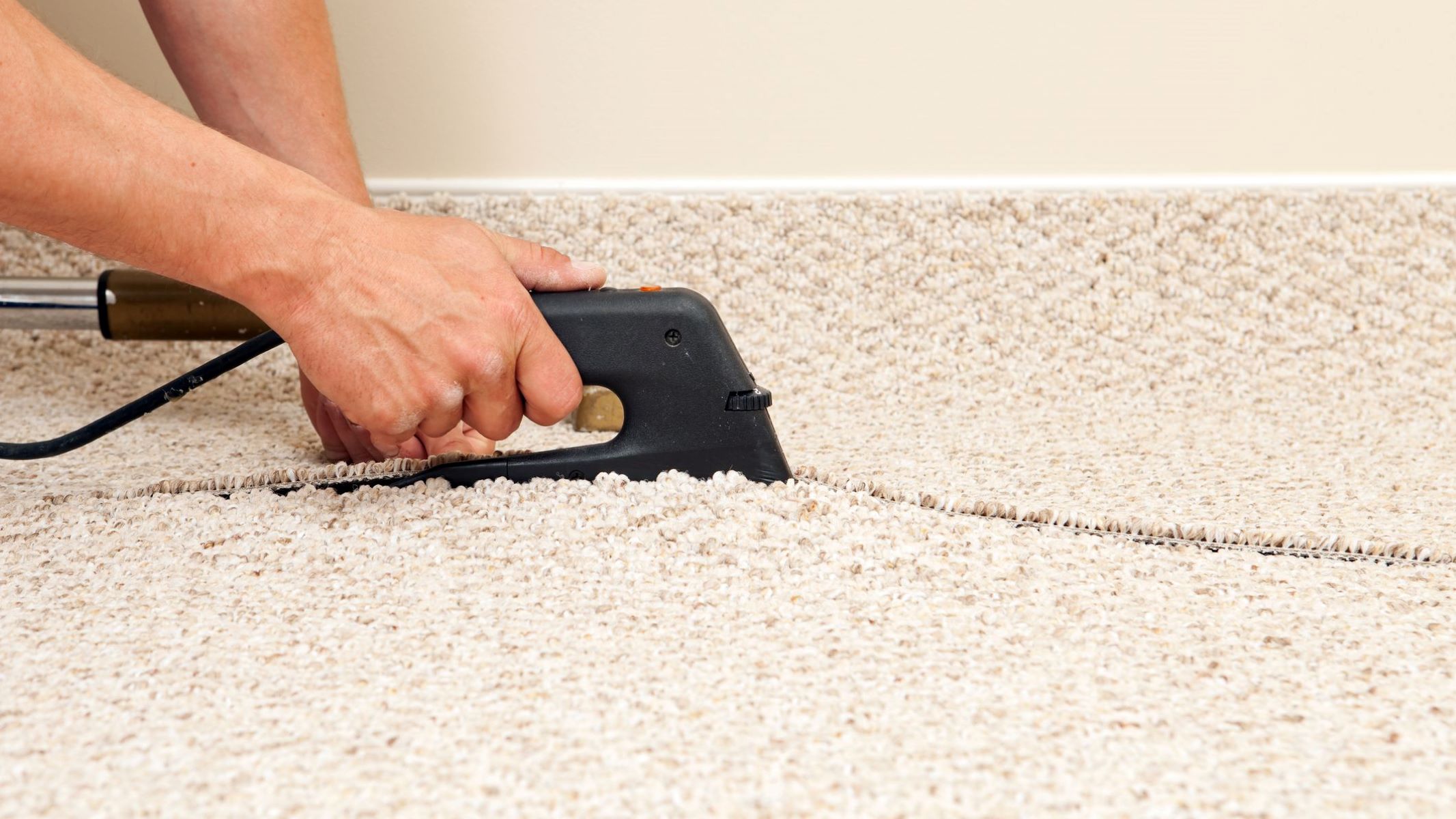

Articles
What To Use In Cutting A Carpet
Modified: February 25, 2024
Looking for articles on what to use in cutting a carpet? Discover expert tips and tools for a seamless carpet cutting process. Enhance your DIY skills now!
(Many of the links in this article redirect to a specific reviewed product. Your purchase of these products through affiliate links helps to generate commission for Storables.com, at no extra cost. Learn more)
Introduction
When it comes to cutting a carpet, having the right tools at your disposal is crucial. Whether you’re installing a new carpet or making adjustments to fit into a specific area, using the appropriate cutting tool will ensure precision and accuracy. With a variety of tools available, it can be overwhelming to determine which one to use. In this article, we will explore different cutting tools and factors to consider when choosing the best tool for your carpet-cutting needs.
Having the right cutting tool not only simplifies the process but also saves time and effort. It allows you to make clean and precise cuts, resulting in a professional-looking carpet installation. Let’s dive into the various tools that are commonly used for cutting a carpet.
Key Takeaways:
- Choose the right cutting tool based on your specific carpet-cutting needs, considering factors such as accuracy, ease of use, safety, and cost. Proper preparation and technique ensure clean and precise cuts for a professional-looking carpet installation.
- Prioritize safety, precision, and patience when measuring, marking, and cutting the carpet. Familiarize yourself with the chosen cutting tool, follow safety guidelines, and work methodically to achieve a successful carpet-cutting experience.
Read more: How To Cut A Carpet
Tools for Cutting a Carpet
When it comes to cutting a carpet, there are several tools that you can choose from, depending on your specific needs and preferences. Here are some of the most commonly used tools for cutting a carpet:
- Utility Knife: A utility knife is a versatile tool that can be used for a wide range of cutting tasks, including cutting carpets. It features a retractable blade that can be easily replaced when it gets dull. Utility knives are lightweight and easy to handle, making them a popular choice among DIY enthusiasts and professionals alike.
- Carpet Shears: Carpet shears are specially designed scissors with a serrated edge that allows for precise cutting of carpet fibers. They are ideal for trimming and shaping carpets, especially in tight and hard-to-reach areas. Carpet shears provide excellent control and accuracy, making them a preferred tool for professional carpet installers.
- Carpet Knife: A carpet knife, also known as a carpet cutter or carpet trimming knife, is a specialized cutting tool specifically designed for cutting carpets. It features a sharp, pointed blade that can be easily maneuvered through dense carpet fibers. Carpet knives are available in various designs, including fixed-blade knives and retractable blade knives.
- Electric Carpet Cutter: For larger carpet-cutting projects or for those who prefer power tools, an electric carpet cutter can be an excellent choice. These tools are equipped with a motorized blade that can effortlessly cut through carpets with less effort. Electric carpet cutters are generally more expensive than manual tools, but they can significantly speed up the cutting process.
These are just a few examples of the tools available for cutting a carpet. The choice of tool will depend on factors such as the complexity of the cutting task, personal preference, and budget. Now that we have discussed the different tools, let’s delve into the factors you should consider when choosing a cutting tool for your carpet.
Utility Knife
A utility knife is a versatile cutting tool that is commonly used for a wide range of tasks, including cutting carpets. It consists of a retractable blade housed in a handle, allowing for easy and safe storage when not in use. Utility knives are a popular choice due to their affordability, accessibility, and ease of use.
When it comes to cutting a carpet with a utility knife, there are a few important factors to keep in mind. First, make sure you have a sharp blade installed in the knife. Dull blades can result in jagged and uneven cuts, making it challenging to achieve a clean and professional-looking finish. If the blade becomes dull during the cutting process, replace it with a new one to ensure smooth cutting.
Before making any cuts, measure and mark the carpet according to the desired dimensions. Use a straight edge or ruler to create a clear line that will serve as your cutting guide. This will help you maintain accuracy and prevent mistakes.
When using a utility knife to cut a carpet, it is recommended to make multiple shallow passes rather than trying to cut through the carpet in one go. This allows for more control and reduces the risk of damaging the carpet or injuring yourself. Apply gentle pressure and keep the blade parallel to the surface of the carpet to achieve a clean cut.
After making the initial cut, you can use the utility knife to trim any excess carpet material. Be cautious while trimming to avoid cutting too much and leaving gaps or uneven edges. Take your time and work slowly, ensuring that you are achieving the desired shape and size.
Overall, a utility knife is a practical and affordable tool for cutting carpets. It provides ease of use and allows for precise cutting when used correctly. However, it may not be suitable for thicker or denser carpets, as the blades of utility knives are typically thinner and may struggle with tougher materials. In such cases, a different cutting tool, such as carpet shears or a carpet knife, may be more appropriate.
Carpet Shears
Carpet shears are specially designed scissors with a serrated edge that are widely used for cutting and shaping carpets. They are a go-to tool for professional carpet installers and DIY enthusiasts alike due to their versatility and precise cutting capabilities.
One of the key advantages of carpet shears is their ability to trim and shape carpets with utmost accuracy. The serrated edge of the shears allows for a firm grip on the carpet fibers, preventing slipping and ensuring clean cuts. This makes carpet shears particularly useful when working on detailed areas or making intricate cuts.
Before using carpet shears, it is essential to measure and mark the carpet according to the desired dimensions. This will serve as your cutting guide and help you maintain accuracy throughout the cutting process. Additionally, ensure that the carpet is secured and flat on a suitable work surface to prevent any movement or distortion while cutting.
When using carpet shears, it is recommended to make small, controlled cuts along the marked line. Avoid cutting too close to the line initially to allow for any necessary adjustments. Gradually trim the carpet, checking the progress along the way to ensure that you are achieving the desired shape and size.
Carpet shears are not only useful for cutting straight lines but also for shaping curves and angles. The serrated edge provides excellent control, allowing for precise cuts in various directions. This makes carpet shears a valuable tool for intricate carpet installations or when working with unconventional shapes.
One aspect to keep in mind when using carpet shears is that the serrated edge can leave a rough finish on the cut edges of the carpet. However, this can be easily managed by using a carpet binding or edging tape to conceal the edges and create a clean and finished look.
Overall, carpet shears are an essential tool for any carpet cutting project. They offer accuracy, control, and versatility, allowing for clean and precise cuts. Whether you’re a professional carpet installer or a DIY enthusiast, having a pair of quality carpet shears in your tool collection will undoubtedly make your carpet cutting experience more efficient and satisfying.
Carpet Knife
A carpet knife, also known as a carpet cutter or carpet trimming knife, is a specialized cutting tool designed specifically for cutting carpets. It is a versatile tool that offers precision and control, making it a preferred choice for carpet installers and DIY enthusiasts.
The construction of a carpet knife typically includes a sharp, pointed blade and a handle. The blade can come in various designs, such as fixed-blade knives or retractable blades that can be extended or retracted as needed. This allows for easy storage and safe handling when not in use.
When using a carpet knife, it is crucial to ensure that the blade is sharp. A dull blade can result in jagged and uneven cuts, compromising the overall appearance of your carpet installation. If the blade becomes dull during the cutting process, replace it with a new one to maintain clean and precise cuts.
Prior to cutting the carpet with a carpet knife, measure and mark the carpet according to your desired dimensions. This will serve as your cutting guide and help you maintain accuracy throughout the process. It is advisable to use a straight edge or ruler to create a clear and straight line for cutting.
When making the initial cut with a carpet knife, apply firm and even pressure to ensure a clean cut. Avoid rushing the process and make shallow cuts initially, gradually increasing the depth as needed. This will help you maintain control and prevent potential mistakes.
A carpet knife is particularly useful when cutting through thicker or denser carpets. The sharp and pointed blade can penetrate through the carpet fibers with ease, allowing for precise and clean cuts. However, it is essential to handle the knife with care to avoid injuries and prevent damage to the surrounding areas.
After the initial cut, you can use the carpet knife to trim any excess carpet material if needed. Take your time and work slowly, ensuring that you are achieving the desired shape and size without cutting too much or leaving uneven edges.
Overall, a carpet knife is a valuable tool for cutting carpets, offering precision, versatility, and control. It is particularly effective for thicker or denser carpets and allows for clean and accurate cuts when used correctly. Whether you’re a professional carpet installer or a DIY enthusiast, having a quality carpet knife in your arsenal will make the carpet-cutting process more efficient and ensure a professional-looking result.
Read more: What Can Be Used To Clean A Carpet
Electric Carpet Cutter
If you have a large carpet-cutting project or prefer the convenience and power of electric tools, an electric carpet cutter might be the perfect choice. This tool is designed to make the cutting process faster and easier, particularly when dealing with thick or dense carpets.
An electric carpet cutter is equipped with a motorized blade that effortlessly cuts through carpet fibers, reducing the need for manual effort and physical strength. This makes it an excellent option for professional carpet installers or individuals working on extensive carpet installations.
One of the main advantages of an electric carpet cutter is its ability to quickly and smoothly cut through dense carpets, saving both time and energy. The powerful motor ensures a clean and precise cut, even on thicker carpets that may be challenging to cut with manual tools.
When using an electric carpet cutter, it is essential to follow the manufacturer’s instructions and safety guidelines. Make sure you have a clear workspace and keep your fingers away from the blade while operating the cutter. Additionally, wearing safety goggles and gloves is highly recommended to protect yourself from any potential hazards.
Before using an electric carpet cutter, measure and mark the carpet according to your desired dimensions. This will serve as your cutting guide and help you maintain accuracy throughout the cutting process. Ensure that the carpet is secured firmly on a suitable work surface to avoid any movement or distortion while cutting.
With an electric carpet cutter, you can make smooth and continuous cuts without the need to pause and readjust the blade. This can significantly streamline the cutting process, especially when working on large areas or complex patterns.
It is important to note that electric carpet cutters are generally more expensive than manual tools. However, the time and effort saved with an electric cutter can outweigh the cost, particularly for professionals or individuals working on extensive carpet installations.
Overall, an electric carpet cutter is a powerful and efficient tool for cutting carpets. It offers speed, precision, and ease of use, making it an excellent choice for large-scale projects or individuals seeking a more convenient cutting experience. If you have a substantial carpet-cutting task ahead, investing in an electric carpet cutter can save time and effort while delivering professional results.
Factors to Consider When Choosing a Cutting Tool
When it comes to choosing a cutting tool for your carpet, it’s essential to consider several factors to ensure that you select the right tool for the job. Here are some key factors to keep in mind:
1. Cutting Accuracy: The level of cutting accuracy required will depend on the specific project and your personal standards. Some tools, such as carpet shears or an electric carpet cutter, offer more precision and control, while others, like a utility knife, may require more skill and attention to achieve precise cuts.
2. Ease of Use: Consider how comfortable and easy it is to handle the cutting tool. The tool should feel ergonomic in your hand and allow for smooth and controlled movements. Look for features like a comfortable grip, lightweight design, and intuitive operation.
3. Safety Features: Safety should be a top priority when selecting a cutting tool. Look for tools with safety features such as retractable blades, blade lock mechanisms, or guards to prevent accidental injuries. It’s also crucial to follow the manufacturer’s safety guidelines and wear protective gear when necessary.
4. Cost: Consider your budget and the value you expect to receive from the cutting tool. Different tools come with different price points, so weigh the cost against the features and benefits offered by each tool. Remember to consider the long-term durability of the tool as well, as a higher-quality tool may be a better investment in the long run.
5. Flexibility: Assess the versatility of the cutting tool and whether it can handle various cutting tasks and materials. Some tools, like carpet shears or electric carpet cutters, may be more versatile and suitable for different types of carpets or cutting techniques, while others may be more limited in their applications.
6. User Reviews and Recommendations: Before making a final decision, read reviews or seek recommendations from professionals or other individuals who have used the cutting tool. Their experiences and insights can provide valuable information to help you make an informed decision.
By considering these factors, you can select a cutting tool that best meets your needs, preferences, and the specific requirements of your carpet cutting project. Remember, the right tool will not only make the cutting process smoother and more efficient but also ensure professional-looking results.
Cutting Accuracy
When choosing a cutting tool for your carpet, one of the most important factors to consider is cutting accuracy. The level of precision you require will depend on the specific project and your personal standards for the finished result.
Some cutting tools offer higher levels of accuracy and control, while others may require more skill and attention to achieve precise cuts. For tasks that demand exceptional accuracy, such as creating straight lines or intricate shapes, it’s essential to choose a tool that can deliver the precision you need.
Carpet shears are known for their ability to provide precise cuts, especially when working on detailed areas or making intricate shapes. The serrated edge of the shears allows for a firm grip on the carpet fibers, preventing slipping and ensuring clean cuts. This makes them an excellent choice when accuracy is a top priority.
On the other hand, an electric carpet cutter can also offer exceptional accuracy due to its motorized blade and consistent cutting speed. The blade’s smooth and continuous motion allows for a uniform and precise cut, even through thick or dense carpets.
A utility knife, while versatile and widely used, may require more attention and skill to achieve accurate cuts. Careful and controlled movements, along with the use of a straight edge or ruler as a cutting guide, are essential to ensure straight and precise lines.
When considering accuracy, it’s crucial to assess the sharpness and quality of the cutting tool’s blade. Dull blades can result in jagged and uneven cuts, compromising the overall appearance of your carpet installation. Regularly replacing or sharpening the blade is vital to maintain optimal cutting accuracy.
Additionally, practicing and familiarizing yourself with the chosen tool can help improve your cutting precision over time. Take the time to get comfortable with the tool’s handling and understand its cutting limitations and techniques to achieve the desired level of accuracy.
Ultimately, the cutting tool you choose should align with the level of cutting accuracy you require for your specific carpet project. Consider the intricacy of the cuts you need to make, the type of carpet you’re working with, and your own level of expertise. By selecting the right cutting tool, you can ensure that your carpet installation meets your standards and achieves a professional-looking finish.
Ease of Use
When selecting a cutting tool for your carpet, it’s important to consider its ease of use. The tool should feel comfortable and intuitive to handle, allowing for smooth and controlled movements throughout the cutting process.
An easy-to-use cutting tool can significantly impact your overall experience and productivity. It can also reduce the risk of errors, injuries, and fatigue, ensuring a more efficient and enjoyable carpet cutting process.
Consider the ergonomics of the tool’s design. Look for features such as a comfortable grip that allows for a secure hold, reducing strain on your hand and wrist. A lightweight and well-balanced tool can also contribute to overall ease of use, preventing unnecessary fatigue during extended periods of cutting.
Additionally, the operation of the cutting tool should be straightforward and user-friendly. Tools with simple mechanisms for blade extension or retraction, as well as easy-to-use locking mechanisms, can enhance the overall ease of use. The process of changing blades, if necessary, should be hassle-free and require minimal effort.
Carpet shears are generally regarded as easy to use due to their scissor-like design. They offer a familiar grip and straightforward cutting motion, making them accessible for both professionals and DIY enthusiasts. Electric carpet cutters, while more powerful, often feature intuitive controls and trigger systems for smooth operation.
Utility knives, while versatile, may require some practice to achieve optimal control and precision. Familiarizing yourself with the proper cutting technique and ensuring a steady hand can improve ease of use with this tool.
Ultimately, the ease of use of a cutting tool is subjective and may vary from person to person. It’s essential to find a tool that feels comfortable and natural in your hand, allowing you to maneuver it with ease.
Prioritize tools that fit your skill level and comfort, and consider any specific requirements you have due to physical limitations or preferences. Reading user reviews and seeking recommendations from professionals or experienced users can provide valuable insights into the ease of use of different cutting tools.
By selecting a cutting tool that offers ease of use, you’ll enhance your overall cutting experience. It will not only make the process more efficient and user-friendly but also contribute to better-quality cuts and a successful carpet installation.
When cutting a carpet, use a sharp utility knife or carpet knife for clean and precise cuts. Make sure to measure and mark the cutting line accurately before cutting.
Read more: How To Cut Up A Carpet For Disposal
Safety Features
When choosing a cutting tool for your carpet, it is essential to prioritize safety. Selecting a tool with appropriate safety features can help prevent accidents and ensure that your carpet cutting experience is as safe as possible.
Here are some key safety features to consider:
Blade Lock Mechanism: Look for a cutting tool that has a reliable blade lock mechanism. This feature allows you to securely lock the blade in place when not in use, minimizing the risk of accidental cuts or injuries.
Retractable Blade: Tools with retractable blades are an excellent safety feature. With a retractable blade, you can easily retract it into the handle when the tool is not in use, reducing the chances of unintentional cuts or injuries.
Blade Guard: Some cutting tools come with a built-in blade guard that covers the sharp edge of the blade when not in use. This provides an additional level of protection and prevents accidental contact with the blade.
Ergonomic Design: An ergonomic design ensures that the tool is comfortable to hold and use, reducing strain and fatigue on your hands and wrists. This can help prevent accidents caused by a loss of grip or control due to discomfort.
Safety Guidelines: It’s crucial to read and follow the manufacturer’s safety guidelines for the specific cutting tool you choose. The guidelines often include tips on proper handling, blade-changing procedures, and other safety precautions to help you reduce the risk of accidents.
While all cutting tools come with inherent risks, using the tool correctly and adhering to safety practices significantly minimizes the chances of accidents. Always wear appropriate safety gear, such as safety goggles and gloves, when using cutting tools to protect yourself from potential hazards.
It’s also beneficial to educate yourself on the proper handling and maintenance of the cutting tool. Regularly inspect the tool for any signs of wear or damage and replace any dull or damaged blades promptly to maintain optimal safety.
If you are unfamiliar with a particular cutting tool or technique, consider seeking guidance from professionals or experienced users who can provide additional safety tips and advice.
Prioritizing safety when selecting a cutting tool for your carpet is crucial to prevent injuries and promote a safe working environment. By choosing a tool with appropriate safety features and following safety guidelines, you can enjoy a secure and accident-free carpet cutting process.
Cost
When choosing a cutting tool for your carpet, cost is an important factor to consider. It’s essential to find a tool that aligns with your budget while still meeting your needs and providing reliable performance.
It’s important to note that the cost of cutting tools can vary significantly. Higher-priced tools often come with additional features, enhanced durability, and better overall quality. However, this doesn’t necessarily mean that you have to break the bank to find a tool that suits your requirements.
Consider the scope of your carpet-cutting project and the frequency of use when evaluating costs. If you’re working on a smaller project or only need the tool for occasional use, a more budget-friendly option may suffice. However, if you’re a professional installer or have large-scale projects, investing in a higher-end cutting tool may be a wise long-term investment.
While cost is an important consideration, it’s crucial to balance it with other factors such as the tool’s performance, durability, and ease of use. Opting for the cheapest option may lead to subpar performance or a shorter lifespan, ultimately costing you more in the long run.
Reading customer reviews and seeking recommendations can be helpful in determining the cost-effectiveness of a cutting tool. Feedback from other users can provide insights into the tool’s overall value, performance, and durability.
Some cutting tools may require additional expenses, such as purchasing replacement blades or accessories, which should also be factored into the overall cost. Consider these ongoing costs as well when evaluating the affordability of a particular tool.
Finally, be wary of excessively low-priced tools that may compromise on quality and safety. Cheap tools may have substandard materials, unreliable performance, or lack necessary safety features. It’s essential to prioritize safety and reliability, even if it means spending a bit more.
In summary, consider your budget and the overall value you expect to receive from the cutting tool. Balance cost with factors such as performance, durability, and safety features. By carefully weighing these considerations, you can make an informed decision and find a cutting tool that provides the best value for your investment.
Step-by-Step Guide to Cutting a Carpet
While cutting a carpet may seem like a daunting task, following a step-by-step guide can simplify the process and ensure a successful outcome. Here’s a comprehensive guide to help you cut a carpet with precision:
1. Measure and Mark the Carpet: Start by measuring the area where you need to cut the carpet. Use a tape measure to determine the desired dimensions. Mark the measurements on the carpet using a marker or chalk. Double-check the measurements to ensure accuracy.
2. Prepare the Cutting Tool: Select the appropriate cutting tool based on your specific needs and the type of carpet you’re working with. Ensure that the blade is sharp and in good condition. If using a utility knife or carpet knife, retract the blade or lock it for safety when not in use.
3. Make the Initial Cut: Position the cutting tool at the edge of the marked line, aligning it with your intended cutting path. Apply firm, steady pressure and make the initial cut along the marked line. Take your time and use smooth, controlled motions to create a clean and straight cut.
4. Trim the Carpet to Size: Once the initial cut is made, follow the marked lines to trim any excess carpet material. Use long, deliberate strokes with the cutting tool, making sure to maintain control and precision. Take care not to cut too close to the line initially, as this will allow for any necessary adjustments.
5. Check the Fit: Periodically check the carpet’s fit in the intended area as you trim. Lay the carpet in place and ensure it aligns correctly and fits snugly. If further modifications are needed, make gradual adjustments by trimming small sections at a time until the desired fit is achieved.
6. Finishing Touches: Once the carpet is cut to the correct size, inspect the edges for any fraying or unevenness. If necessary, use binding tape or other finishing materials to secure and conceal the edges for a clean and professional look. Trim any loose threads or excess fibers for a polished final result.
7. Clean Up: After completing the carpet cutting process, clean up any debris and remove any excess carpet material from the workspace. Dispose of the waste properly according to local regulations.
Remember, the key to successful carpet cutting is patience, attention to detail, and using the appropriate cutting tool. Take your time, follow the measurements and markings precisely, and prioritize safety throughout the process.
By following this step-by-step guide, you can cut your carpet accurately and achieve a professional-looking result that perfectly fits your space.
Measure and Mark the Carpet
The first step in cutting a carpet is to measure and mark the specific area where you will be making the cut. Accurate measurements are essential to ensure that the carpet fits perfectly and looks professional once installed. Here’s a detailed guide on how to measure and mark the carpet:
1. Gather Your Tools: Before you begin, gather all the necessary tools for measuring and marking, including a tape measure, a straight edge or ruler, and a marker or chalk. Having these tools readily available will make the process more efficient.
2. Clear the Area: Ensure that the area where the carpet will be laid is clear of any furniture or obstacles. This will give you a clear and unobstructed space to work with during the measuring and marking process.
3. Start at a Reference Point: Begin measuring from a fixed reference point, such as a wall or corner. Use the tape measure to measure the length or width of the area where the carpet will be placed. Make sure to measure accurately and avoid any deviations or gaps that may compromise the final fit.
4. Mark the Measurements: Once you have measured the dimensions, use a straight edge or ruler to create a clear and straight line on the carpet. You can use a marker or chalk to make the markings visible. Take your time and ensure that the markings are precise and aligned with the measured dimensions.
5. Double-Check the Measurements: After marking the initial measurements, it’s crucial to double-check them for accuracy. Measure again to validate that the dimensions are correct and that the marked lines align with the desired area. This step ensures that the final cut will fit perfectly without any inconsistencies or gaps.
6. Consider Seam Allowance: If you are cutting a larger piece of carpet that needs to be seamed together with another piece, be sure to account for the appropriate seam allowance. Seam allowances are typically an extra inch or two beyond the measured dimensions to allow for proper fitting and joining of the carpet pieces.
7. Take Safety Precautions: During the measuring and marking process, it’s important to prioritize safety. Use caution when using sharp tools such as markers or knives, and make sure to handle them properly to prevent injuries. Additionally, wear appropriate safety gear, such as gloves and eye protection, especially when cutting carpet with a utility knife or carpet knife.
By following these steps to measure and mark your carpet accurately, you will set a solid foundation for a successful carpet-cutting project. Taking the time to measure carefully and mark the carpet precisely will contribute to a seamless installation and a professional-looking result.
Read more: What Can I Use To Cut Glass
Prepare the Cutting Tool
Once you have measured and marked the carpet, the next step in cutting it is to prepare the cutting tool. Properly preparing the tool will ensure that it is in optimal condition and ready to make clean and precise cuts. Here’s a step-by-step guide on how to prepare the cutting tool:
1. Select the Appropriate Cutting Tool: Consider the type of carpet you are working with and the specific cutting requirements of your project. Different cutting tools, such as utility knives, carpet shears, carpet knives, and electric carpet cutters, have distinct features and purposes. Choose the tool that best suits your needs and provides the desired level of cutting precision.
2. Check the Blade: Before using the cutting tool, ensure that the blade is sharp and in good condition. A dull or damaged blade can result in uneven or jagged cuts, compromising the overall quality of the carpet installation. If needed, replace the blade or sharpen it according to the manufacturer’s instructions.
3. Adjust the Blade (if applicable): If you are using a cutting tool with an adjustable or retractable blade, make sure it is set at the appropriate depth. For example, if using a utility knife, ensure that the blade is extended to the desired length for the thickness of the carpet. Follow the manufacturer’s instructions to adjust the blade accordingly.
4. Familiarize Yourself with the Tool: Take a moment to familiarize yourself with the cutting tool’s features, controls, and proper handling techniques. Read the user manual or instructions provided by the manufacturer to understand how to safely and effectively operate the tool. Pay attention to any specific guidelines or precautions related to the tool’s use.
5. Ensure Safety: As with any cutting tool, it’s important to prioritize safety. Use caution when handling sharp objects and ensure you are wearing appropriate protective gear, such as gloves and eye protection. Follow the recommended safety practices for the particular cutting tool you are using, including proper grip, angle, and use of safety features such as blade locks or retractable mechanisms.
6. Test the Cutting Tool: Before making the actual cuts on the carpet, it can be helpful to do a few test cuts on a scrap piece of carpet or in an inconspicuous area. This will allow you to familiarize yourself with the cutting tool’s feel and functionality, ensuring that it is working properly and ready for use on the main carpet pieces.
By taking the time to properly prepare the cutting tool, you’ll have confidence in its performance and ensure that it is ready to deliver the clean and precise cuts needed for your carpet installation. Remember to prioritize safety throughout the preparation process, and always follow the manufacturer’s guidelines for the specific cutting tool you are using.
Make the Initial Cut
After measuring the carpet and preparing the cutting tool, it’s time to make the initial cut. This step requires precision and control to ensure a clean and accurate start to your carpet cutting process. Here’s a step-by-step guide on how to make the initial cut:
1. Position the Cutting Tool: Place the cutting tool at the edge of the marked line, aligning it with the intended cutting path. Ensure that the tool is positioned firmly and securely to maintain stability during the cutting process.
2. Apply Steady and Even Pressure: Holding the cutting tool with a firm grip, apply steady and even pressure as you begin cutting along the marked line. It’s important to maintain consistent pressure throughout the cutting motion to achieve a smooth and clean cut.
3. Use Controlled Movements: Make controlled, deliberate movements as you guide the cutting tool along the marked line. Avoid rushing or forcing the tool, as this can result in uneven or jagged cuts. Instead, focus on maintaining a steady pace and keeping the tool on the marked line.
4. Make Shallow Cuts: If you’re using a utility knife or carpet knife, it’s recommended to make shallow initial cuts rather than trying to cut through the carpet in one pass. This allows for greater control and reduces the risk of mistakes or damaging the carpet. Gradually deepen the cuts as needed, following the marked line.
5. Check the Cut Line: After making the initial cut, pause briefly to assess the cut line. Ensure that it is straight, accurate, and aligns with the intended area. If any adjustments are needed, carefully make minor corrections by trimming small sections of the carpet in a controlled manner.
6. Continue the Cutting Process: With the initial cut made, you can now proceed to cut along the remaining marked lines to trim the carpet. Follow the same technique of applying steady pressure, using controlled movements, and making gradual cuts to achieve the desired shape and size.
7. Take Safety Precautions: Throughout the cutting process, remember to prioritize safety. Pay attention to the position of your hands and fingers, keeping them clear of the cutting path. Take breaks as needed to rest and refocus, especially during longer cutting sessions.
By following these steps and maintaining a focus on precision and control, you can make the initial cut with confidence and ease. Take your time, practice patience, and ensure your cutting tool is properly aligned to achieve the best possible result for your carpet installation.
Trim the Carpet to Size
Once you’ve made the initial cut on the carpet, the next step is to trim it to the desired size. Trimming the carpet accurately is crucial to achieving a proper fit and a professional-looking installation. Follow these step-by-step instructions to trim the carpet to size:
1. Follow the Marked Lines: Align the cutting tool with the marked lines that indicate the desired size and shape of the carpet. This may involve following straight lines or curves, depending on your specific carpet cutting project. Take your time to ensure that the cutting tool stays on the marked lines throughout the trimming process.
2. Work in Small Sections: Rather than trying to cut the entire length or width of the carpet in one go, work in smaller sections. This allows for better control and precision. Slowly guide the cutting tool along the marked lines, trimming small sections at a time until you reach the desired size.
3. Make Smooth and Even Cuts: Apply consistent pressure and use controlled movements as you trim the carpet. This helps maintain straight and even cuts. Avoid sudden or jerky motions, as they can lead to uneven or jagged edges. Take your time to ensure each cut is smooth and clean.
4. Check the Fit: Periodically check the fit of the trimmed carpet in the intended area. Lay the trimmed section in place and make sure it aligns correctly and fits snugly. If adjustments are needed, trim small sections at a time until the desired fit is achieved. Be cautious not to cut too much off, as it’s easier to trim more later if needed.
5. Trim Excess Material: As you continue trimming, remove any excess carpet material that is no longer needed. This helps keep the work area tidy and allows for better maneuverability. Dispose of the excess carpet material properly according to local regulations.
6. Take Safety Precautions: Throughout the trimming process, prioritize safety. Continue to follow safety guidelines for the specific cutting tool you are using. Be mindful of your fingers and hands, ensuring they are clear of the cutting path. Take breaks if needed to rest and refocus, especially during longer trimming sessions.
7. Trim Edges for a Finished Look: Once the main section of the carpet is trimmed to size, inspect the edges for any fraying or unevenness. Use a utility knife or carpet shears to trim the edges tidily. This will give the carpet a polished and finished appearance.
By following these steps and maintaining attention to detail, you can trim the carpet to the desired size and shape accurately. Take your time, work in small sections, and double-check the fit to achieve a professional result in your carpet installation.
Conclusion
Cutting a carpet may seem like a daunting task, but with the right tools and techniques, it can be accomplished accurately and efficiently. By considering factors such as cutting accuracy, ease of use, safety features, and cost when selecting a cutting tool, you can ensure a successful carpet cutting experience.
Utility knives are versatile and widely accessible, while carpet shears offer precision and control, making them ideal for detailed cuts. Carpet knives provide specialized cutting capabilities, and electric carpet cutters offer power and efficiency for larger projects.
It is essential to measure and mark the carpet accurately before commencing cutting. Preparring the cutting tool properly and following safety guidelines during the process is crucial to prevent injuries and ensure a safe work environment.
By following a step-by-step approach, including making the initial cut and trimming the carpet to size, you can achieve clean and precise cuts. Take your time, stay focused, and check the fit periodically to achieve the desired result in your carpet installation.
In conclusion, cutting a carpet requires careful consideration of tools, techniques, and safety precautions. By choosing the right cutting tool, following proper steps, and prioritizing safety, you can achieve a professional-looking carpet installation that fits flawlessly in your space. Happy carpet cutting!
Frequently Asked Questions about What To Use In Cutting A Carpet
Was this page helpful?
At Storables.com, we guarantee accurate and reliable information. Our content, validated by Expert Board Contributors, is crafted following stringent Editorial Policies. We're committed to providing you with well-researched, expert-backed insights for all your informational needs.

